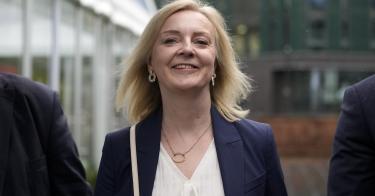Singer Peter Allen had a hit in the 1970s with “Everything Old is New Again,” a sentiment that holds just as true for politics.
Take the same supply-side revolution that was reignited throughout the English-speaking Western world four decades ago. It’s making a comeback because the big-government alternative has spent the better part of the last several decades impoverishing the common man and destroying nations’ finances.
Former United Kingdom Prime Minister Liz Truss explains in her recent book, Ten Years to Save the West, that an entrenched political establishment, or “deep state,” is hellbent on preventing the supply-side revolution from returning to either the U.S. or the U.K., no matter what voters want.
Immediately upon taking office and pursuing supply-side policies, Truss “was marked by the technocrats for political extinction.” But the very fact that the political establishment brought the knives out to cut short her tenure as prime minister means that she did something right.
>>> Inflation Will Stick Around As Long as the Big Spenders Do
After all, you only take flak when you’re over the target.
Nothing short of a coup was organized by fiscal and monetary authorities of the British government to unseat Truss. For two and a half years, the U.K. operated massively bloated budget deficits financed by the Bank of England’s securities purchases, with the predictable results of inflation and a cost-of-living crisis.
The Exchequer and the Bank of England repeatedly engaged in coordinated monetary manipulations to keep yields artificially low on U.K. securities, thus masking the severity of the government’s spending problem.
When Truss put forward her proposed reforms, the political establishment violently swung the monetary levers in the other direction, exposing the crisis they themselves created. The timing was purposely orchestrated to blame the fallout of excessive spending on the reforms that sought to reverse that very spending.
Why was there such a concerted effort to attack Truss? Because her supply-side agenda has proven successful and would be so again. If allowed to play itself out, as it was under the late Prime Minister Margaret Thatcher, there would have been widespread support for Truss and the political establishment would have been exposed as power-hungry, self-serving technocrats, not public servants.
After several years of profligate government spending, both in the U.S. and the U.K., people are ready for a change in direction. Demand-boosting, inflation-inducing, debt-producing Keynesian economics has left the English-speaking world with a bad taste in its mouth.
The return to supply-side economics championed by Truss is the hopeful message people today are ready to hear.
Four decades ago, Thatcher and President Ronald Reagan confronted a situation similar to the global predicament of today. Inflation and high interest rates have made people demonstrably worse off, onerous regulation and high taxes have turned economic growth anemic, and excessive government spending has crowded out private sector activity.
The political establishment’s response at the time was resignation to the fact that the developed world was doomed to economic malaise, with no chance of seeing robust growth again.
But Thatcher and Reagan championed a different message: one of hope. The stagflation of the 1970s was a self-inflicted wound, not a foregone conclusion. Reversing the impolitic policies that caused the mess would get government out of the way and allow the private economy to unleash prosperity.
>>> “Bougie Broke” Americans: Spending More While Falling Further Behind
The combination of tax and regulatory reform under Reagan created eye-watering growth rates, with the economy expanding 12% over a year and half while inflation fell and real incomes rose.
Today’s torpid economy and stratospheric cost of living have once again piqued people’s interest in alternatives to the political establishment’s failed nostrums. The citizenry’s receptiveness to supply-side reforms presents conservatives with an opportunity not seen in about 40 years.
The difference is that modern leaders, such as Truss in 2022 and former President Donald Trump in 2024, face a larger, more entrenched political establishment that has proven itself more uncompromising and unyielding than ever before.
But anything built by man can be overcome by man, including the technocrats’ deep state. The failures of the ruling elites have brought supply-side policies back into vogue, with the winning track record of the latter making people throughout the English-speaking world revisit the victories of their history—and reconsider their future.
The “old” supply side is “new again,” and it’s making a comeback.
This piece originally appeared in the Washington Examiner


